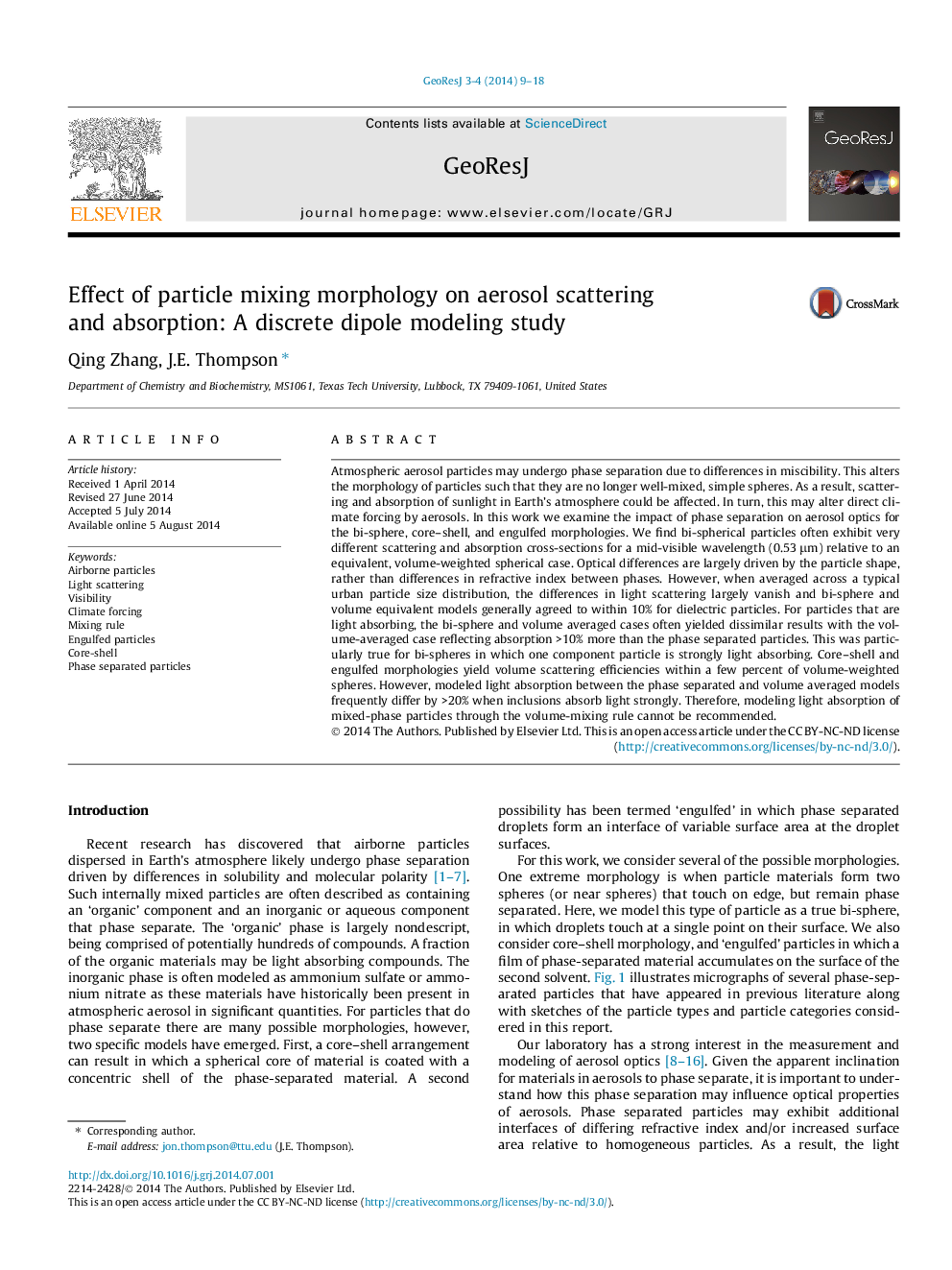| Article ID | Journal | Published Year | Pages | File Type |
|---|---|---|---|---|
| 4674464 | GeoResJ | 2014 | 10 Pages |
Atmospheric aerosol particles may undergo phase separation due to differences in miscibility. This alters the morphology of particles such that they are no longer well-mixed, simple spheres. As a result, scattering and absorption of sunlight in Earth’s atmosphere could be affected. In turn, this may alter direct climate forcing by aerosols. In this work we examine the impact of phase separation on aerosol optics for the bi-sphere, core–shell, and engulfed morphologies. We find bi-spherical particles often exhibit very different scattering and absorption cross-sections for a mid-visible wavelength (0.53 μm) relative to an equivalent, volume-weighted spherical case. Optical differences are largely driven by the particle shape, rather than differences in refractive index between phases. However, when averaged across a typical urban particle size distribution, the differences in light scattering largely vanish and bi-sphere and volume equivalent models generally agreed to within 10% for dielectric particles. For particles that are light absorbing, the bi-sphere and volume averaged cases often yielded dissimilar results with the volume-averaged case reflecting absorption >10% more than the phase separated particles. This was particularly true for bi-spheres in which one component particle is strongly light absorbing. Core–shell and engulfed morphologies yield volume scattering efficiencies within a few percent of volume-weighted spheres. However, modeled light absorption between the phase separated and volume averaged models frequently differ by >20% when inclusions absorb light strongly. Therefore, modeling light absorption of mixed-phase particles through the volume-mixing rule cannot be recommended.
